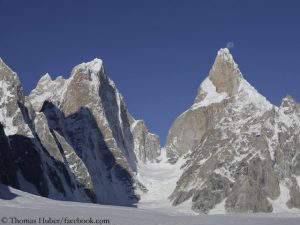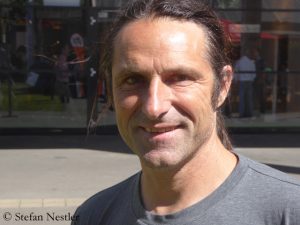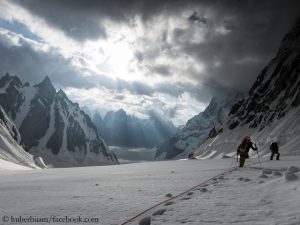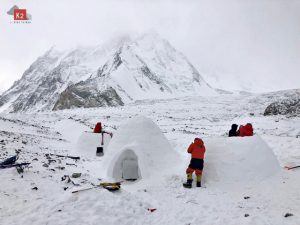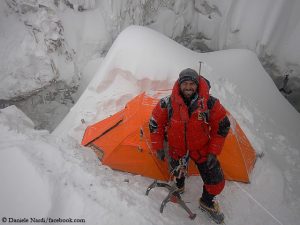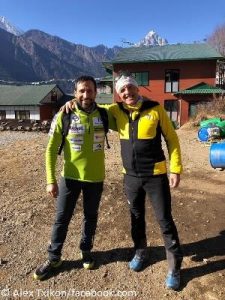Alexander Huber: “Climate change is clearly noticeable”
Three attempts, then it was over. As reported, Alexander Huber, the Swiss Dani Arnold and the two East Tyroleans Mario Walder and Christian Zenz abandoned their expedition on the 7285-meter-high Ogre I in Pakistan and returned home. They had wanted to reach the summit of the mountain, which so far has been scaled only three times, over the still not mastered East Pillar. I spoke to Alexander, aged 48, the younger of the two Huber brothers, about the failed expedition.
Alexander, you wrote on Facebook that you knew what the mountain wanted to tell you. What was the message?
We set off to the mountain three times and were able to control the situation with maximum risk management three times. But we noticed every time that we were running extremely late. There was only a very short time window to move safely on the mountain. In this case you have to be en route with full steam to get out of the danger zone on time. We did it three times, and it turned out well. But one day it won’t work so well, and then you are in the middle of this extremely dangerous terrain and can not get out.
In addition, we had such a bad snow. We fought through slush, at 6,100 meters, and in the middle of the night! Those were brutal conditions. This is clearly due to climate change. So better stay away if you want to survive.
Was it an unanimous decision to abandon the attempt?
Absolutely unanimous. It was clear to all of us that under such circumstances we do not even have the slightest chance of coming close to the summit at all. And if I know I’m not going to reach the summit, because the snow is so lousy, it’s better to leave it be. We have also seen the snowfields above and realized that an avalanche had swept down there. Of course, it doesn’t ensure a good atmosphere if you see that the snow conditions above are still problematic and very dangerous.
You mentioned climate change. Once again, it was extremely warm in the Karakoram this summer. Do you think it’s an alternative to arrive at a later date?
I experienced it two years ago on Latok, last year in Greenland and now again: Climate change is so clearly noticeable that it almost hurts. As in the Alps, mountaineering will also have to change in the Karakoram. Probably in the future climbers will first acclimatize on an easy seven-thousander and then travel to such a difficult mountain as Ogre towards the end of August, for only two or three weeks. This is the only scenario I can think of so far, so that you can tackle such a dangerous mountain with the strength you need. For sure, I’m going to do it this way next time.
So, you will try for the third time to scale Ogre I?
Maybe. In 1993, I first envisaged this mountain as a goal, along with some friends from the Bavarian town of Traunstein. However, in the end we decided to go to Latok II, where I went with Thomas in 1997. [With Toni Gutsch and the American Conrad Anker, they succeeded the first ascent via the West Face of Latok II]. In 1999, we tried to climb Ogre I [With Gutsch and Jan Mersch, they tried in vain to climb via the South Pillar to the summit]. This was the beginning of my thinking about mountaineering and climbing on the very high mountains. That’s why Ogre is somehow anchored in me. If it fits, I’ll go back there. But if I do so, then certainly with completely changed tactics.



